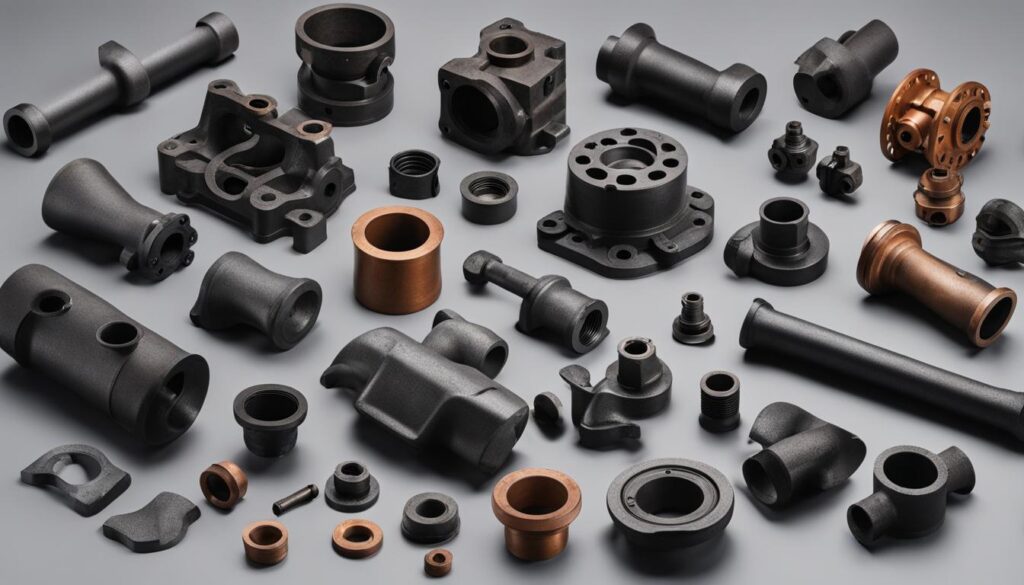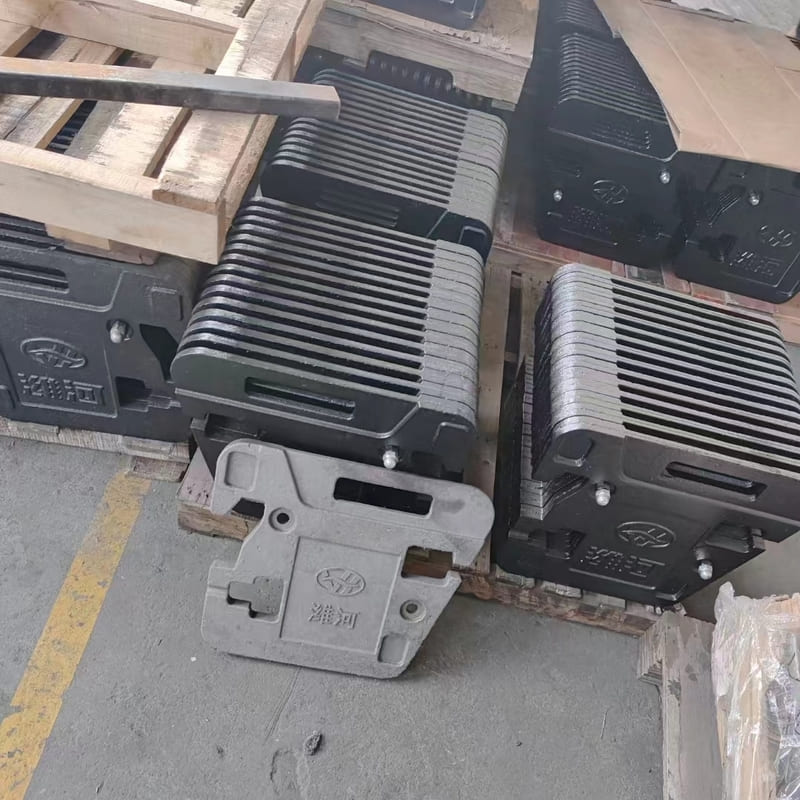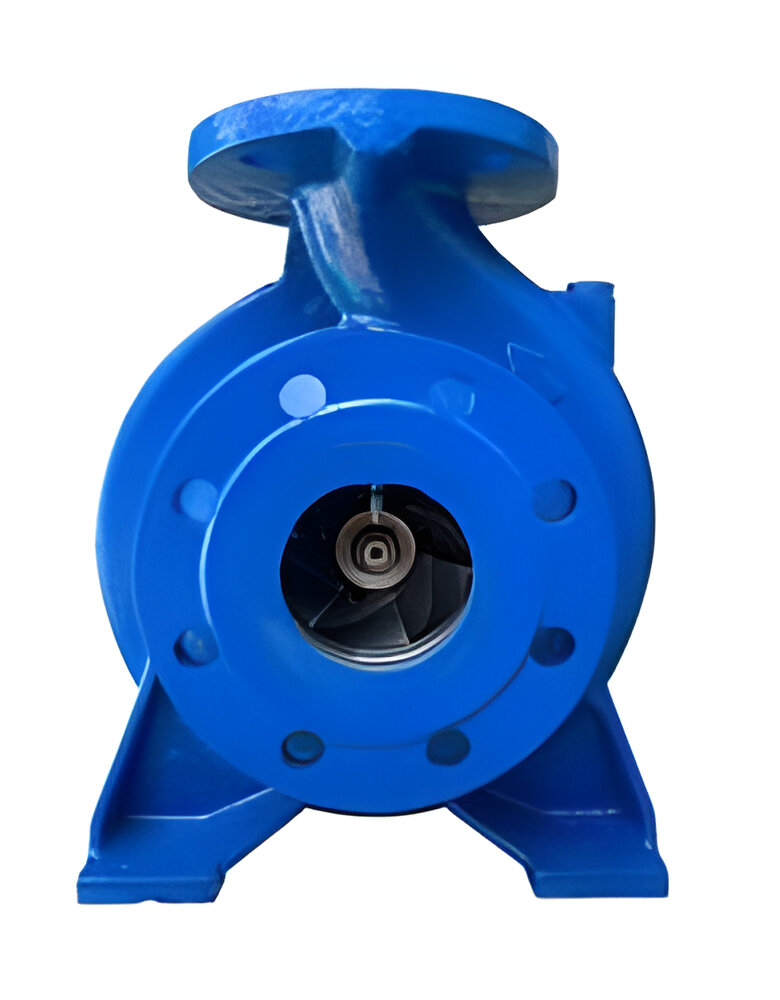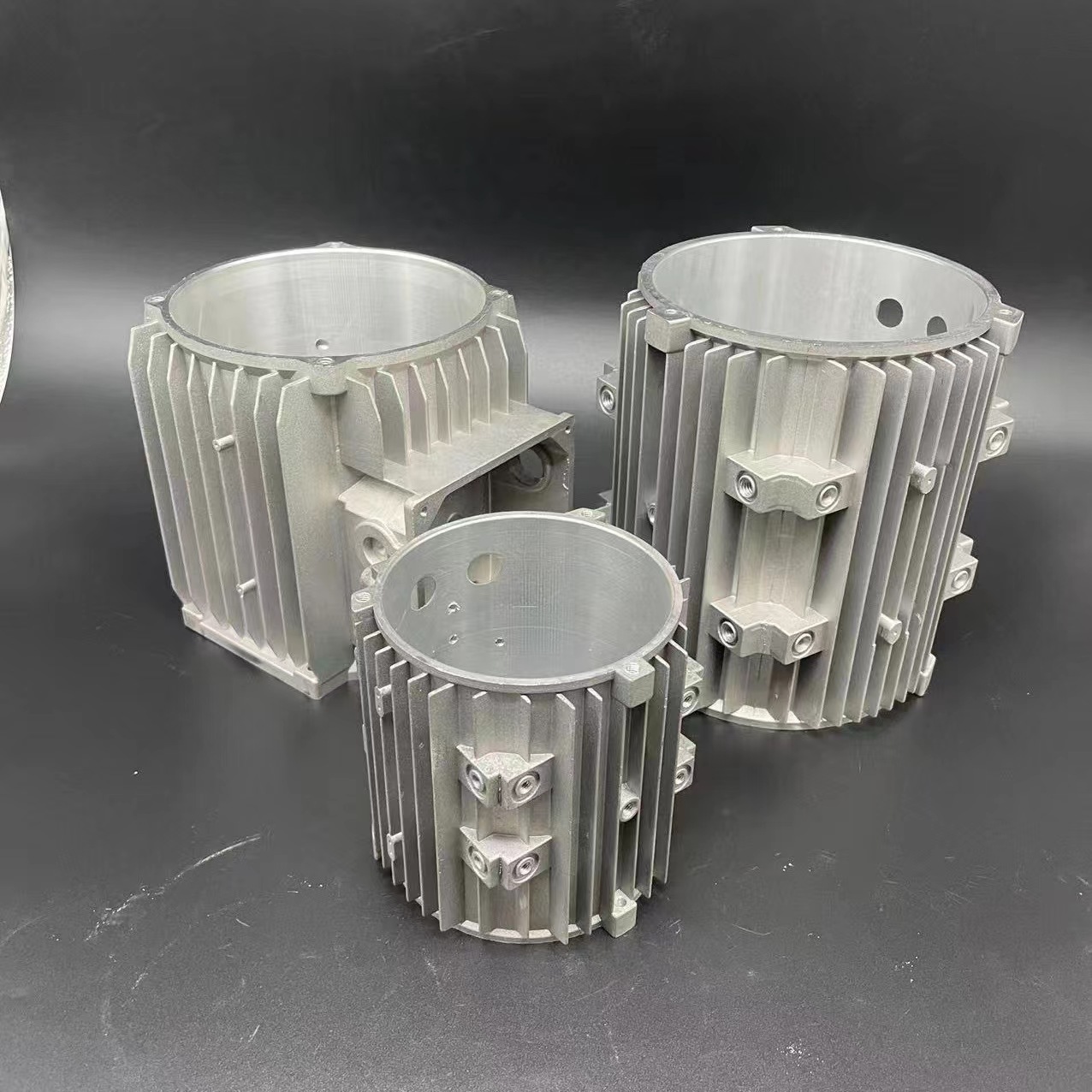At KT-Foundry, we view the gray iron casting process as an art form, and the mastery of melting and pouring as a cornerstone of our casting craftsmanship. The transformation of metal materials into a molten state involves expert handling of state-of-the-art heating furnaces and flawless execution of critical procedures. Our dedication to this craft has led us to thrive in the metal casting industry, delivering castings with outstanding strength, complexity, and quality.

Molten iron pouring from a crucible into a mold, with intense heat causing orange sparks to fly. The metal glows red-hot, illuminating the surrounding area. The mold sits on a sturdy platform, ready to receive the liquid iron. A worker in protective gear monitors the pour, ensuring accuracy and safety.
Key Takeaways
- Gray iron casting process is regarded as an art form at KT-Foundry.
- Melting and pouring are central to successful iron casting craftsmanship.
- State-of-the-art heating furnaces are used for transforming metal materials.
- Proper execution of melting and pouring processes is essential for optimal casting quality.
- KT-Foundry delivers castings with excellent strength, complexity, and quality.
Understanding the Melting Process in Gray Iron Casting
Striking the perfect balance of temperature control, chemical composition management, and impurity eradication, the melting process plays a pivotal role in ensuring cast iron quality. At KT-Foundry, our procedures are geared towards achieving the highest standards possible at each stage of the process to deliver exceptional results.

Show molten metal pouring into a mould during the gray iron casting process. The scene should be set in a foundry with the workers wearing protective gear. Include the equipment being used, such as the furnace and ladles, and emphasize the heat and glow of the melting process. The angle should give a sense of the scale of the pouring process and highlight the fluidity of the liquid metal as it fills the mould.
The Role of Temperature in Melting Quality
Maintaining the optimal melting temperature for gray iron castings is crucial and requires a pouring temperature between approximately 1330-1410 degrees Fahrenheit. We ensure the molten iron's temperature aligns with the specified brand and casting structure conditions, with temperatures not lower than 1460-1480℃ for malleable cast iron of different grades. In doing so, we minimize heat loss during pouring, a factor essential for the production of castings with extra thin walls.
Chemical Composition and Its Impact on End-Product
Alongside temperature control, managing the chemical composition of gray iron is vital in determining the final product's properties and overall quality. As the iron undergoes the melting process, careful adjustments to the alloying elements are made, refining the composition to deliver our clients' desired mechanical properties, strength, and durability upon solidification of the casting.
Controlling Harmful Impurities During Melting
Impurities present in the molten iron can degrade the final product's performance and lifespan. To mitigate this, at KT-Foundry, we employ various techniques like desulfurization and dephosphorization to control and reduce the presence of detrimental impurities in our gray iron castings. By adhering to our stringent KT-Foundry standards, we strive to ensure superior gray iron castings that meet and exceed expectations.
The Influence of Molten Iron Properties on Gray Iron Casting

"Vibrant rivers of liquid metal flowing through a fiery furnace, as sparks dance and swirl in the air"
At KT-Foundry, the molten iron's inherent properties directly influence the casting's structural integrity. Particularly, the graphite flake content present in gray iron significantly affects the overall strength and capacity to absorb mechanical vibrations. This trait is highly utilized in parts such as engine blocks and crankshafts.
Furthermore, gray iron ductility plays a crucial role in determining the cast product's performance. Its exceptional thermal conductivity aids in heat dissipation, which is an essential factor for components like case engines and dies subjected to high-stress conditions.
Gray iron's inherent properties directly impact its ductility, heat dissipation, and effectiveness in casting applications.
- Graphite flake content for strength and vibration absorption
- Exceptional thermal conductivity for heat dissipation
Understanding and controlling these properties is vital for minimizing casting defects and ensuring a high-quality end product. Our expertise at KT-Foundry allows us to optimize and tailor the properties of the molten iron for specific casting applications, resulting in industry-leading castings that exhibit the desired durability and performance characteristics.Table: Key molten iron properties and their influence on gray iron casting
| Molten Iron Property | Role in Casting Process | Impact on End-Product |
|---|---|---|
| Graphite flake content | Affects overall strength and capacity to absorb mechanical vibrations | Optimal graphite flake content results in durable and high-performing engine blocks, crankshafts, and other critical components |
| Thermal conductivity | Enhances heat dissipation for components subjected to high-stress conditions | Superior thermal conductivity ensures effective heat management, contributing to longer component life and improved performance |
In summary, the molten iron properties have a significant impact on the final gray iron casting product. Identifying and controlling these properties is essential to achieving casting excellence and is a key component of our expertise at KT-Foundry.
Optimizing the Pouring Technique for Superior Gray Iron Castings
At KT-Foundry, our expertise in gray iron casting extends to refining the pouring technique, employing meticulous control methods to maintain consistent temperatures and ensure molten iron's integrity and properties. Our commitment to precision is demonstrated through the implementation of modification and refinement processes before pouring, aiming for gray iron castings with superior quality and desired characteristics.
Temperature Regulation for Consistent Pouring
Temperature regulation is a critical aspect of the pouring technique optimization at KT-Foundry. We utilize advanced control systems to maintain a consistent casting temperature during the pouring stage, ensuring the integrity and properties of gray iron are preserved post-pouring. This attention to detail safeguards casting quality and contributes to the precise properties we aim to achieve in our end products.
Modification and Refinements Pre-Pouring
In addition to temperature regulation, we uphold rigorous refinement processes for optimized gray iron castings. Stirring specific alloys is conducted before pouring to avert density segregation, just one of the many refinements we practice in our continuous pursuit of KT-Foundry casting precision. These modifications help us closely control the properties and performance of each casting, ensuring unparalleled quality in our finished products.
Our Foundry's Approach to Achieving Excellence in Gray Iron Casting
At KT-Foundry, our approach to gray iron casting is rooted in tradition and refined by innovation. We work with alloys consisting of a considerable percentage of iron, silicone, and carbon to achieve the desirable composition of gray iron. The graphitic microstructure of our castings affirms our mastery in controlling the exact properties of the final product, from its mechanical strength to its energy dissipation capacity.
Gray iron casting excellence is at the core of our foundry's operations. Our commitment to foundry innovation has led us to adopt cutting-edge techniques and processes that not only improve cast iron durability but also enable us to maintain our competitive edge in the industry. At KT-Foundry, we recognize the importance of meeting and exceeding our clients' expectations, which drives us to deliver high-quality gray iron castings consistently.
KT-Foundry's commitment to continuous improvement has led to significant advancements in our gray iron casting process. From the initial melting and pouring stage to the final product's inspection, our team of skilled professionals pays close attention to every detail. We have implemented rigorous quality control measures to ensure that each casting meets the highest standards of excellence that our clients have come to expect from us.
"At KT-Foundry, our approach to gray iron casting is rooted in tradition and refined by innovation."
As part of our commitment to staying at the forefront of foundry innovation and ensuring cast iron durability, we actively strive for:
- Customer-focused engineering support
- Continuous investment in research and development
- Technological advancements in machinery, equipment, and processes
- Environmentally sustainable production methods
- Workforce development and employee training
In conclusion, our dedication to gray iron casting excellence and unyielding commitment to our clients positions KT-Foundry as a leading foundry capable of meeting the most demanding requirements. From concept to completion, our team remains focused on delivering innovative solutions, exceptional quality, and unparalleled service to clients worldwide.
Conclusion
At KT-Foundry, our expertise in casting mastery and constant pursuit of excellence has placed us at the forefront of the gray iron casting industry. Our sophisticated melting and pouring practices are backed by our unwavering commitment to quality and technical acumen. This dedication ensures that our products consistently meet and exceed the expectations of durability, performance, and artisanship in the metal casting industry.
As a company focused on creating a sustainable future, KT-Foundry continues to innovate and lead the way, incorporating sustainable foundry practices and cutting-edge technology in our casting processes. We believe that our success lies in constantly updating our methods and upholding our promise of KT-Foundry assurance. This approach not only continues our traditions but also drives us forward.
With a clear vision of the gray iron casting future, our foundry is committed to pioneering new techniques and adopting sustainable practices throughout our operations. By investing in our team's skillset, continuously improving our craft, and remaining steadfast in our commitment to exceptional quality, we at KT-Foundry are casting a legacy as enduring as the materials we work with.
FAQ
What is the significance of melting and pouring in the gray iron casting process?
The melting and pouring process at KT-Foundry is crucial in the gray iron casting process as it impacts the quality of the castings, such as internal and appearance quality and the prevention of defects like cold shuts. This procedure helps shape structurally complex castings and affects mechanical properties through chemical composition adherence.
How is temperature regulation important in gray iron casting?
Temperature regulation is vital in the gray iron casting process as it directly impacts the fluidity of molten iron, the structurally complex shaping of castings, and the overall adherence to chemical composition. Proper temperature control helps to maintain consistent pouring, ensuring the integrity and properties of the gray iron are preserved after pouring.
What aspects of the melting process contribute to cast iron quality?
The melting process's aspects that contribute to cast iron quality include the melting temperature, chemical composition, impurity control (desulfurization, dephosphorization), and KT-Foundry's strict adherence to quality standards.
How do molten iron properties influence gray iron casting?
The properties of molten iron, such as the graphite flake content, play a significant role in determining the overall strength, capacity to absorb mechanical vibrations, and thermal conductivity of gray iron castings. This directly affects the structural integrity and performance of the final products, such as engine blocks and crankshafts.
What techniques does KT-Foundry implement to optimize their pouring technique for superior gray iron casting?
KT-Foundry uses a variety of techniques to optimize their pouring technique. This includes meticulous control methods to maintain consistent temperatures, stirring specific alloys before pouring to avoid density segregation, and implementing various refinements to ensure the integrity and properties of the gray iron are preserved post-pouring.
What is KT-Foundry's approach to achieving excellence in gray iron casting?
KT-Foundry's approach to achieving excellence in gray iron casting involves using alloys consisting of a considerable percentage of iron, silicone, and carbon to attain the desired gray iron composition and implementing rigorous standards and continuous improvement. This commitment ensures products meet durability, performance, and craftsmanship expectations in the metal casting industry.
How does KT-Foundry work towards a sustainable future in gray iron casting?
KT-Foundry actively works towards a sustainable future in gray iron casting by implementing innovative approaches and focusing on continuous improvement, ensuring longevity and quality in their products. This dedication extends to both the cast materials and the foundry practices, resulting in a longstanding reputation for excellence.






